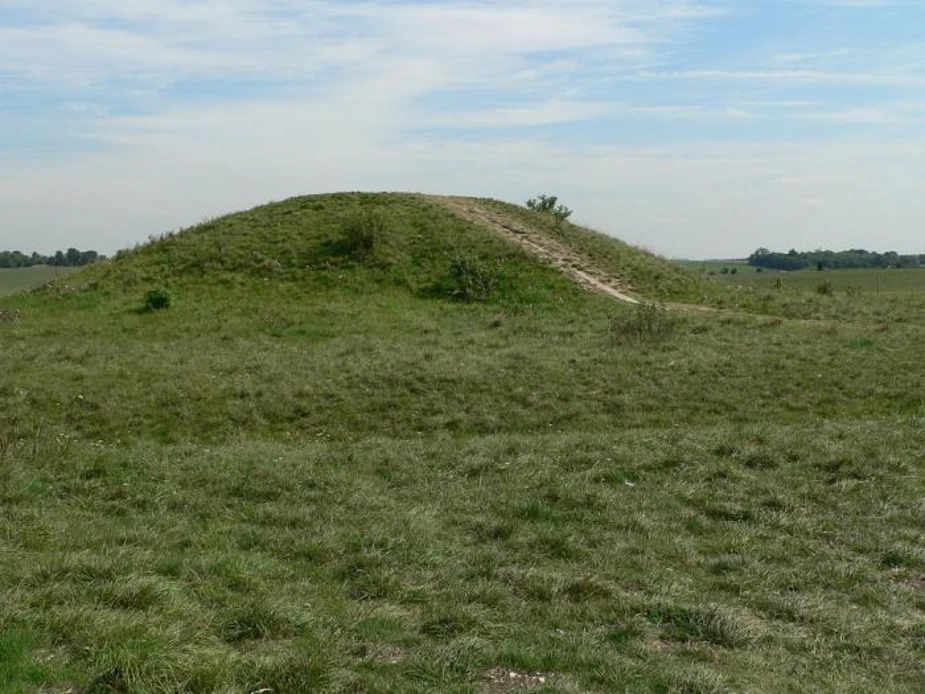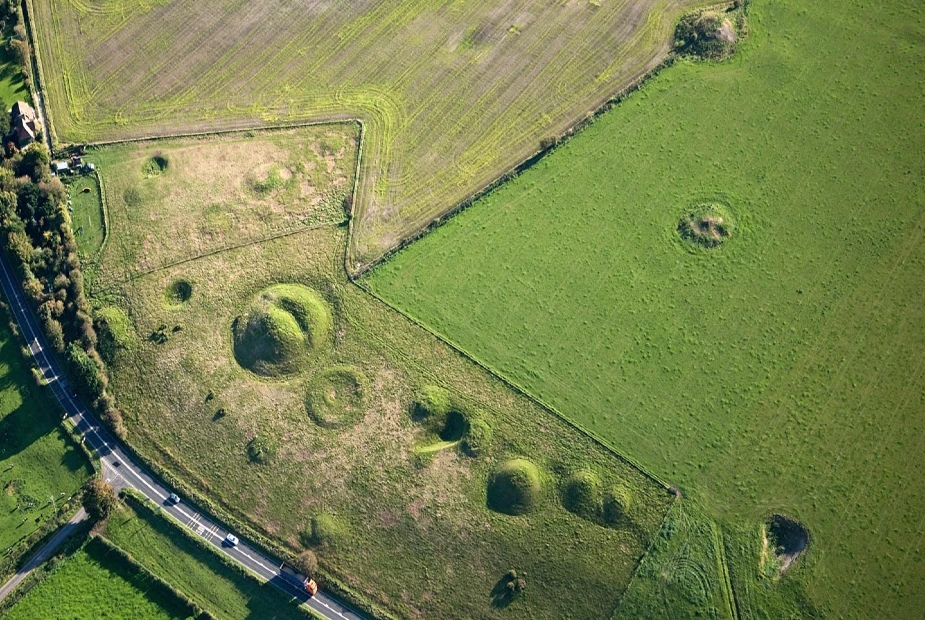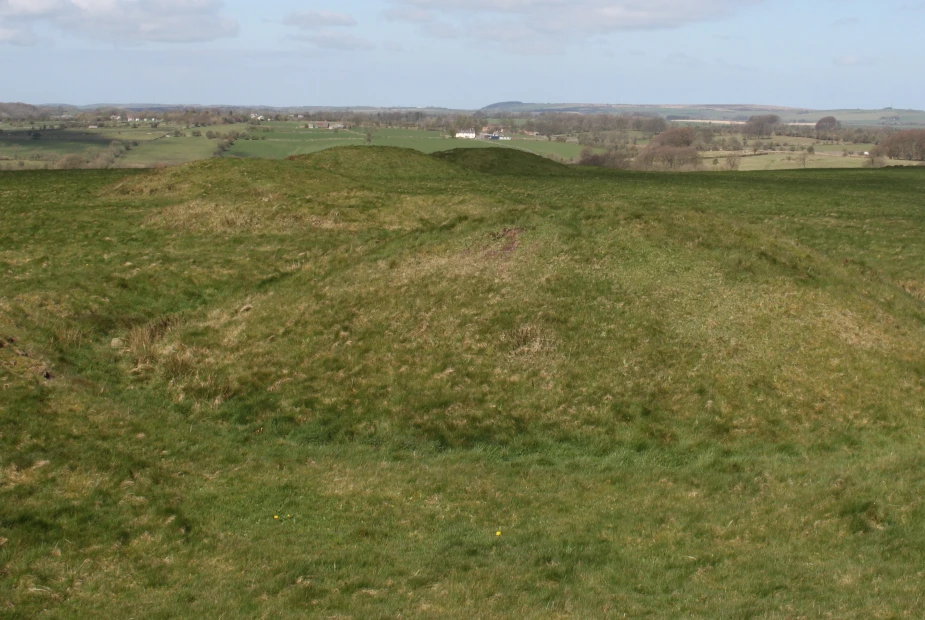The Bronze Age barrows found throughout England were built between 2200 BC and 1100 BC.
These round mounds, often surrounded by a ring ditch from which the earth and stone was excavated, were used as burial sites.
They were also used to carry out rituals that connected the community, similar to how parish churches are used today.
The Stonehenge World Heritage Site Landscape Project was able to uncover the history of these barrows by combining a survey of the surviving mounds with evidence from
- Antiquarians
- Aerial photographs
- Geophysical studies
- Excavations
The Cursus Barrows

One famous group of Bronze Age barrows is the Cursus Barrows in Amesbury Down near Stonehenge.
This barrow is believed to be constructed over a small circle of posts in a ditch that was built a thousand years before any barrows were created.
There are about 18 barrows arranged along the ridge of the down, some of which have been modified in antiquity or more recently.
These barrows are believed to have been built over the burials of individuals and contain other human remains, most likely from the same family or clan.
The Winterbourne Poor Lot Barrows

Another example is the Winterbourne Poor Lot Barrows in South Dorset Ridgeway.
This site contains around 44 barrows, including rare and fragile disc, bell and pond barrows that date back to the Early Bronze Age.
These barrows are scheduled to preserve their potential of revealing chronological and cultural links between prehistoric communities.
The Priddy Nine Barrows

Finally, the Priddy Nine Barrows on Ashenhill and North Hill in the Mendip Hills, Somerset, comprises two distinct lines of bowl barrows.
These barrows are constructed over earlier, much lower, stone cairns and their location at the skyline makes them particularly eye-catching.
Recent studies by Historic England have revealed more about these monuments and their significance.
Featured Image: Countrylife.co.uk



